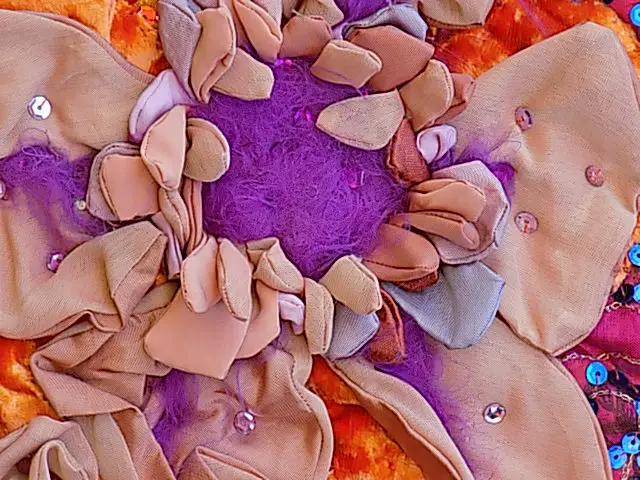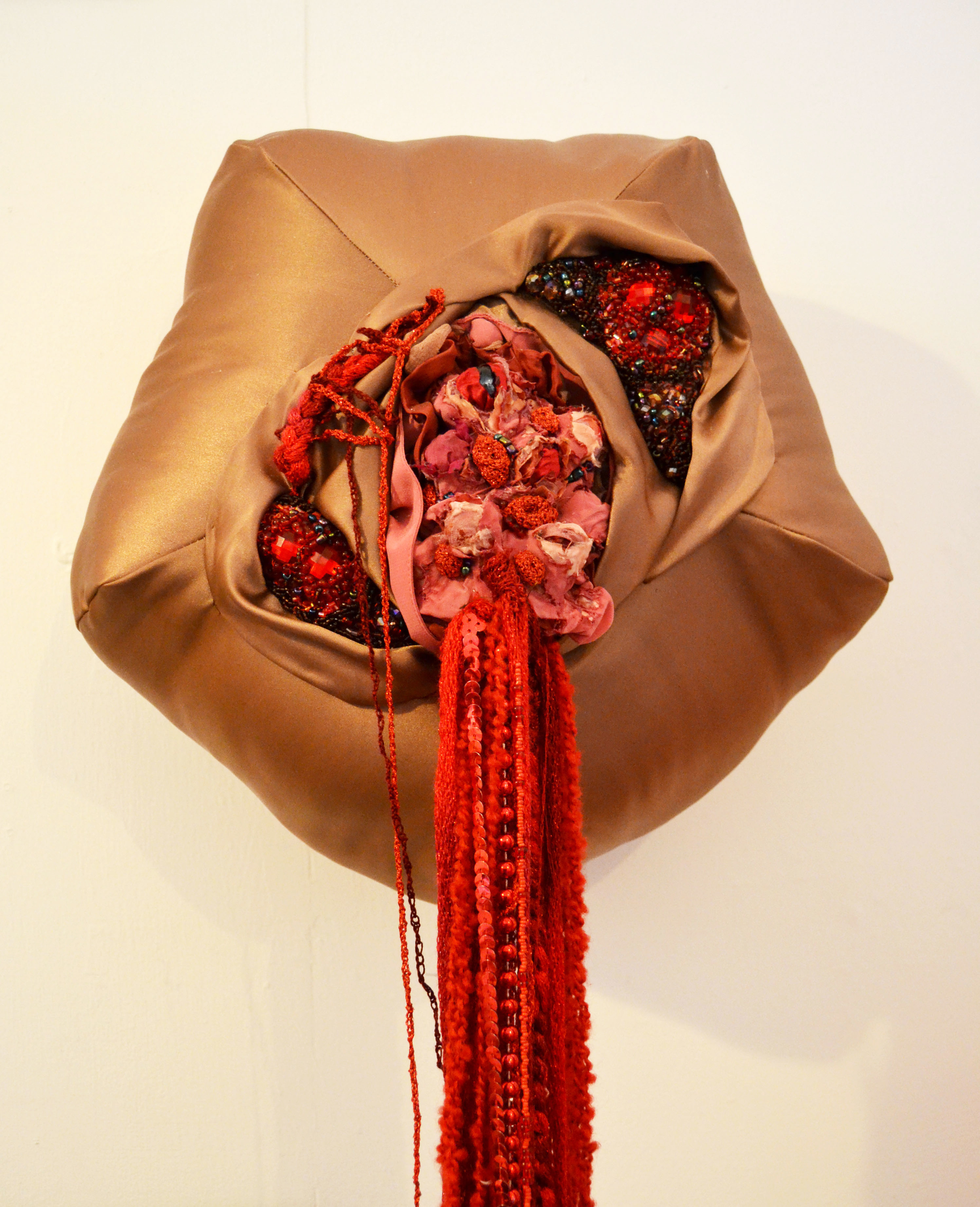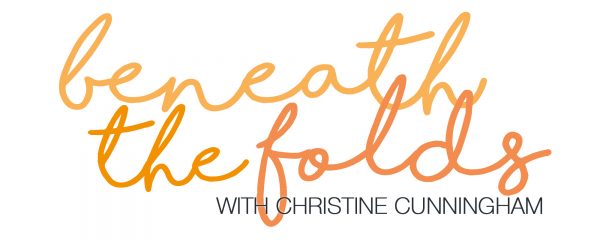
Why Use Hollow Structures In Textile Art?
Hollow structures can raise a contoured surface away from a flat background, casting shadow, reinforcing depth within the contouring of 3D sculptures. Abstract flower designs are constructed from hollow petals and leaves machine stitched (right sides together), cut and turned out to be moulded around a single bud or flower head, creating a rich textural carpet of movement and depth.
What Is Surface Contouring?
‘Yellow Sunflowers’ is a fine example of surface contouring with long tapered petals and leaves, creating a surface depth of 4.5 inches. There is a natural rhythm within the layering application around a central flower head and diversity within individual parts which are curled and sculpted by hand.
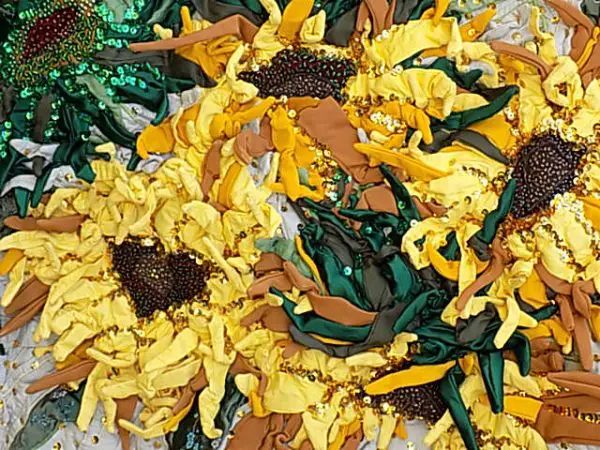
How To Create Hollow Structures
A variety of techniques can be used to strengthen hollow structures. The petals of ‘Green Sunflowers’ are painted to give structure to the soft open weave cotton, achieving a depth of 4 inches.

Both ‘Yellow’ and ‘Blue Sunflowers’ use pipe cleaners inside the long petals and leaves to provide movement of individual parts and direction within the surface contouring. Diversity within the texture and colour palette adds a visual depth within the design.
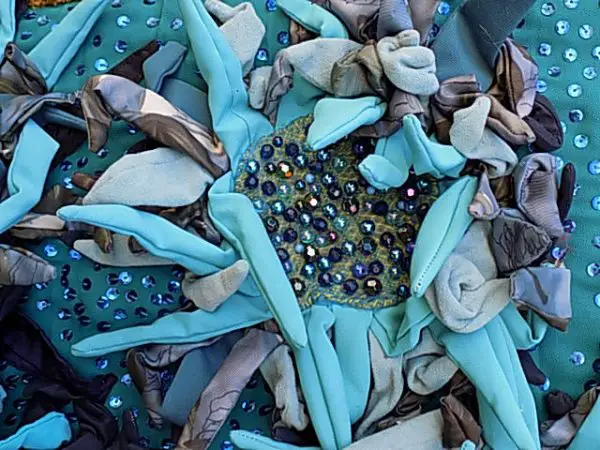
Natural strength can be achieved by leaving an excess of redundant fabric when cutting around the machined petal, providing bulk when turned out. The process of wrapping petals around a single bud creates a mature rose in in ‘Cancer 1: Lumpectomy’ with a depth of 2.5 inches.

The size and shape of each petal determines its versatility and strength. In ‘Ecstasy’ small petals stand upright around the abstract flower head, creating a depth of 3.5 inches. In contrast large leaves lie flat against the background.
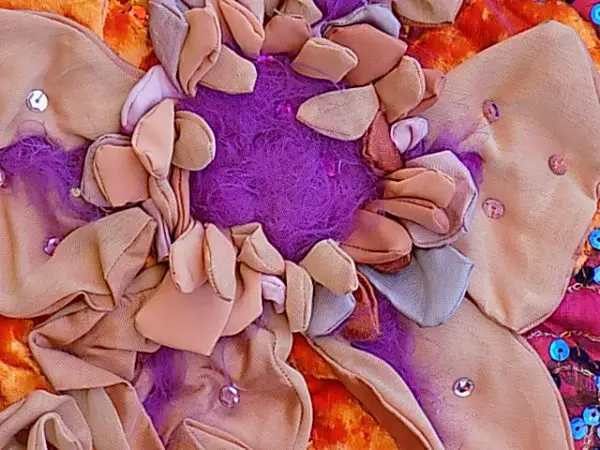
How Materials Affect Hollow Structures
The type of materials used plays a crucial part in determining strength and structure of 3D sculptures. In contrast to the large organza leaves of the ‘Ecstasy’ garden, ‘Gang Bang’ offers naturally sculpted lilies created from a thick silk, requiring no more than a single stitch to anchor in place. Beautifully contoured with a depth of 5 inches.
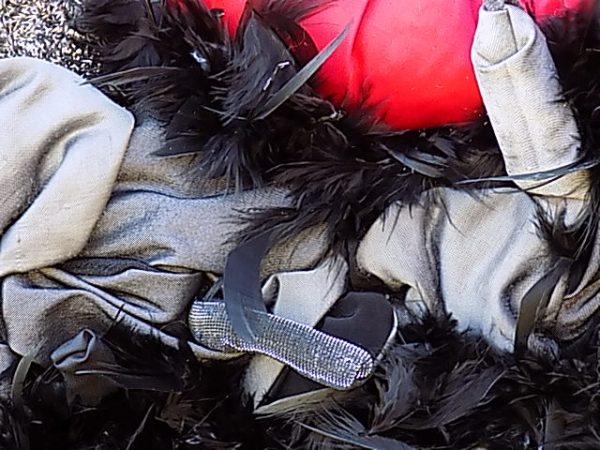
Great strength can be achieved from a collection of hollow structures. The 3D vagina in ‘V AND A’ is moulded from a sculpted mass of tiny silk petals creating a depth of 4 inches with a rich surface contouring.
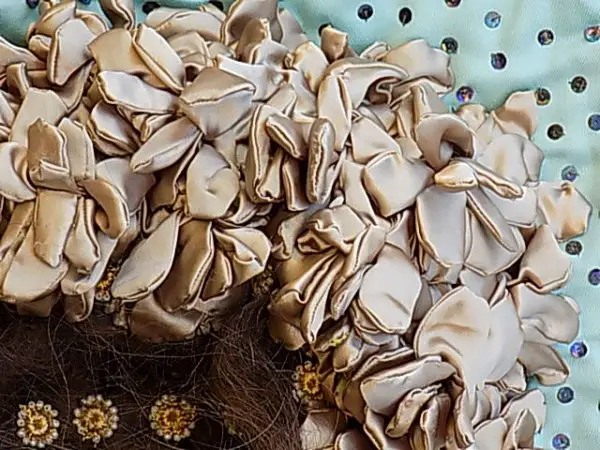
Exploring 3D Textiles created from hollow structures follows my previous article in which I investigate 3D sculptures created from padded structures. For more textiles with sculptural contouring visit my two collections at https://www.ccunningham-textileartist.com/ and https://ma9798.wixsite.com/ccunningham-woman by Christine Cunningham.

